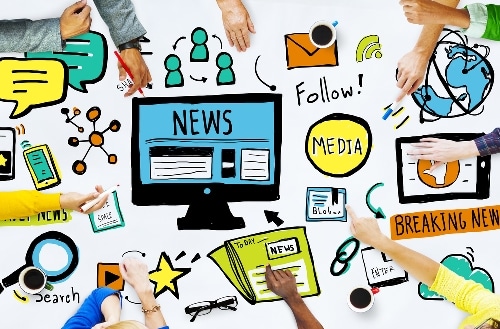New News To Selecting Italian Primary Teaching Materials
Wiki Article
What Are The Best Educational Aids, Manipulatives And Visual Aids For Italian Preschools?
Italian preschools benefit from using a variety of resources that aid the development and learning of their pupils. Here are some suitable materials. Manipulatives. Children can make use of manipulatives to explore and learn. They can also develop their fine-motor skills. For instance manipulatives like puzzles, blocks, pegboards for sorting and stacking games may be suitable for Italian preschoolers.
Visual aids are a fantastic way to help children learn and retain concepts and develop their language. For Italian nursery school visual aids like posters, charts maps picturesbooks, flashcards and picture books are ideal.
Educational Technology The use of technology in education is a great option to boost education and provide students with more tools. Italian technologies for nursery schools include touchscreen tablets that have interactive whiteboards and educational apps.
In Italian nursery schools, it is crucial that the materials used for education are age-appropriate and safe. They should also be culturally appropriate. The selection of materials should be based on your individual preferences and requirements. The caregivers and teachers at the nursery school need to regularly update and evaluate the materials that they use in order to ensure they are active and efficient. Follow the top materiale didattico italiano for blog recommendations.

What Maths Teaching Aids And Educational Materials Are Recommended In Italian Nurseries?
Mathematical materials for teaching and educational tools can assist Italian preschoolers develop their spatial and numerical abilities and problem-solving skills. A few examples of suggested materials include: Counting manipulatives: The use of counting manipulatives such as counting bears and blocks could help children improve their counting skills and fine motor abilities and hand-eye coordination.
Number cards and charts are a great idea as a method of introducing children to counting and numbers. This can include large colorful numbers to be hung on walls or smaller cards which children can hold.
Shape manipulatives. Shapes manipulatives are useful for children to develop their spatial thinking abilities and to learn about various shapes.
Measuring tool: Measuring and comparing tools, such as rulers, measuring instruments, and scales, can help youngsters to develop and learn their mathematics vocabulary.
Simple games and puzzles: Simple puzzles and games like jigsaws and matching games, or dominoes can aid in developing children's problem-solving skills, attention to detail and concentration.
Technology-based aids: Technology based aids, such as tablets with math games or apps that are educational are able to engage and inspire youngsters. They also provide additional tools to help children learn.
The materials must be used in a manner that's suitable for children's development and is safe for young children. These are great for parents and teachers who want to create exciting and engaging math games that encourage children's curiosity. Follow the most popular materiale didattico matematica for site tips.

What Are The Science Didactic Books Recommended In Italian Nursery Schools?
Science didactic cards can be helpful in introducing young children in Italian nurseries to fundamental scientific concepts. Here are a few kinds of science didactics cards that can be recommended. Animal cards: They help children to learn about animals and their traits. They may include illustrations of animals and their habitats to make the learning experience more enjoyable.
Plant cards: Plant cards can assist children in learning about various plants and their traits. They can also include pictures of the plant species and their stages of growth to make learning more enjoyable.
Weather cards are a fantastic method to educate children about the various kinds of weather, and how they affect the environment. They may include images of weather conditions, such as rain, sun, snow and clouds.
Space cards: The Space card are a great way to help youngsters to learn more about the solar System and its different planets. Illustrations can be used to show the unique features of each planet.
Human Body Cards: These cards assist youngsters to understand the various parts of their bodies and how they function. They may also include images that illustrate the function of different body parts.
Choose science cards that are engaging, appropriate for ages 0-12 and engaging for young children. Teachers and caregivers can use these cards to design fun and interactive science-based activities that stimulate children's curiosity and love of discovering the world around them. Read the best materiale didattico scienze for more info.

What Are The Most Effective Materials For Teaching The Italian Language In Schools?
Italian nurseries can utilize geography-related materials to help children understand different cultures and environments. Here are a few examples of possible geography teaching resources: Maps. Maps can be used to help children comprehend geography, which includes the geographic features of various countries and regions.
Globes are a great way to help kids visualize the Earth's surface and teach them about continents as well as oceans.
Pictures and videos: Pictures and videos of diverse places and cultures can help children learn about the global diversity and gain an appreciation for various ways of life.
Books: Age-appropriate children's books which highlight diverse cultures can spark a child's curiosity and curiosity about the world.
Natural materials, like shells, plants, and rocks, can be used to teach children about the various ecosystems and their environments.
Field trips. Field trips can be a great method to provide your children with authentic experiences, as well as a chance to introduce them to geography.
It is crucial to select geo-related materials that are both suitable for both a child's and a parent's age. These materials let caregivers and teachers to create fun and interactive activities that foster children's enthusiasm for learning and curiosity.
